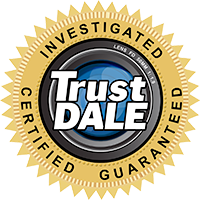
Pooling Water in Crawl Space
Using an improper vapor barrier, like this black plastic covering, may appear to keep your space dry, but it fails to properly isolate the area. As a result, water often pools on top of the plastic. This stagnant water leads to increased humidity in the air, directly contributing to the issues the homeowner was facing.

Evidence of Water Damage
At the base of these crawl space walls, you can clearly see signs of water damage. Installing a proper vapor barrier will resolve this issue and significantly improve the space. Just wait until you see the transformation!

Mold
A wet and vented crawl space like this is an ideal breeding ground for mold. This is particularly alarming because up to 50% of the air you breathe in your home originates from below, potentially leading to increased allergies and asthma issues.

Wet Floor Joists
The humidity in this crawl space is starting to impact the floor joists, as shown here. This dampness can quickly lead to wood rot, so it's best to encapsulate your crawl space before any damage occurs.

Drainage Matting
The transformation starts with the installation of drainage matting, which sits beneath the CleanSpace vapor barrier. This setup prevents water from getting trapped underneath and creates a space for groundwater to drain properly.

CleanSpace Installed
After the drainage matting is installed, the CleanSpace vapor barrier is applied to the crawl space floor and walls. This durable, bright white liner features a mold-resistant additive, helping to prevent mildew and mold growth on its surface.

TripleSafe Sump Pump
The TripleSafe sump pump system is highly recommended by our experts. This system features a powerful backup battery that will keep up with water demand during a power shortage.

SaniDry Sedona
The final step of this project was to install the SaniDry Sedona, an energy efficient system to keep your air clean and healthy!
 4.9
4.9 



